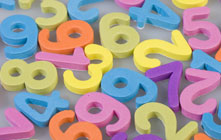Multiplication Puzzles, Solutions and Explanations
Multiplication facts can be difficult and stressful to memorize. However, you can make it a better experience by providing your child with fun multiplication puzzles. Keep reading to find out how to create your own.

How to Make Multiplication Puzzles
Multiplication is typically introduced in third grade, and students often learn the times tables for 0-10. Help your child review multiplication problems by completing a puzzle. To make your own at home, use puzzles that are familiar to your child and incorporate multiplication problems into them.
Only include basic multiplication facts in your puzzles. If your child is struggling with one type of problem in particular, use these puzzles for additional review. For instance, if your child doesn't understand the nine times tables, be sure to include more problems involving nine.
Multiplication Puzzles and Solutions
Word Search
Make a multiplication word search by creating a table on your word processor. Write answers to multiplication problems as words inside the table. For instance, 3 x 5 = fifteen. Finish the puzzle by filling in all the empty squares with random letters. Write out the multiplication problems below the table. After solving a problem, your child will look for the answer inside the word search.
Multiplication Match-Up
Turn a classic memory game into a review. On one set of note cards, write equations such as 7 x 8. On another set of cards, write the answers. Then, flip all the cards upside down and have your child match up the multiplication facts to the answers.
Connect the Dots
Have your child complete a connect-the-dots picture using multiplication. Instead of writing the numbers, write the multiplication problems. For instance, 1 x 1 = 1, 2 x 3 = 6 and 3 x 4 = 12. Although third graders probably haven't completed a connect-the-dots picture since a very early age, they may enjoy this new spin on a classic puzzle.
Guess the Number
This puzzle is similar to a word problem and forces students to practice both multiplication and division. Consider the following example:
What number multiplied by 6 equals 48?
The answer is eight. To figure out this problem, your child must be familiar with the basic multiplication facts (8 x 6 = 48). It also requires your child to practice division skills because she has to consider what 48 ÷ 6 is.
Other Articles You May Be Interested In
-
Sample Math Worksheet - Simple and Advanced Multiplication Tables

This sample worksheet shows you how to structure both basic and advanced multiplication tables. These formats are meant to help students memorize simple multiplcation problems and, when randomized, challenge them.
-
Tips to Helping your Fourth Grader with Multiplication Homework

Here are some ways to help your child learn multiplication and make fourth grade math homework fun.
We Found 7 Tutors You Might Be Interested In
Huntington Learning

- What Huntington Learning offers:
- Online and in-center tutoring
- One on one tutoring
- Every Huntington tutor is certified and trained extensively on the most effective teaching methods
K12

- What K12 offers:
- Online tutoring
- Has a strong and effective partnership with public and private schools
- AdvancED-accredited corporation meeting the highest standards of educational management
Kaplan Kids

- What Kaplan Kids offers:
- Online tutoring
- Customized learning plans
- Real-Time Progress Reports track your child's progress
Kumon

- What Kumon offers:
- In-center tutoring
- Individualized programs for your child
- Helps your child develop the skills and study habits needed to improve their academic performance
Sylvan Learning

- What Sylvan Learning offers:
- Online and in-center tutoring
- Sylvan tutors are certified teachers who provide personalized instruction
- Regular assessment and progress reports
Tutor Doctor

- What Tutor Doctor offers:
- In-Home tutoring
- One on one attention by the tutor
- Develops personlized programs by working with your child's existing homework
TutorVista

- What TutorVista offers:
- Online tutoring
- Student works one-on-one with a professional tutor
- Using the virtual whiteboard workspace to share problems, solutions and explanations